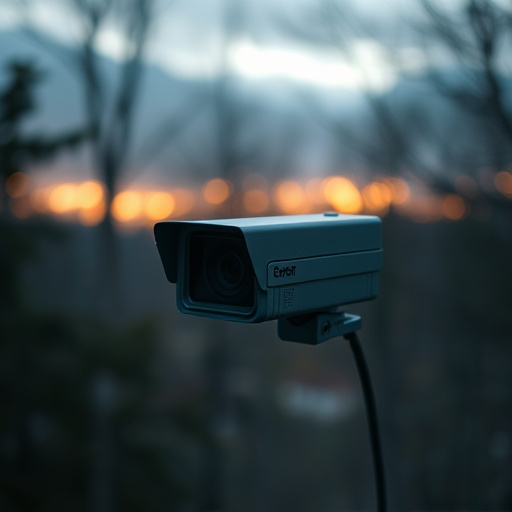Hidden Nanny Cams equipped with night vision technology offer a delicate balance between surveillance and privacy in modern homes. These advanced devices, designed for covert recording, allow caregivers to ensure children's safety without raising awareness. With infrared night vision, motion detection, and high-resolution video, they capture clear footage in low-light conditions or when unoccupied, making them essential tools for peace of mind. However, their use must be ethical and legal, considering potential privacy concerns. Strategic placement in unobstructed corners or along walls, targeting play areas or kitchens, ensures discreet surveillance while adhering to state and federal laws regarding surveillance.
Uncover the art of discreet surveillance with our comprehensive guide on covert recording spot identification. Explore the ins and outs of hidden cameras, from basic principles to advanced techniques, including night vision technology for enhanced stealth. Learn where to strategically place ‘nanny cams’ while navigating ethical boundaries and legal frameworks. This essential resource empowers you to master the art of subtle observation, ensuring both safety and privacy awareness when deploying hidden nanny cams equipped with cutting-edge night vision capabilities.
- Understanding Covert Recording: The Basics of Hidden Cameras
- Night Vision Technology: Enhancing Stealth and Visibility
- Identifying Potential Spots for Nanny Cams
- Ethical Considerations and Legal Frameworks
- Advanced Techniques for Discreet Placement and Detection Methods
Understanding Covert Recording: The Basics of Hidden Cameras
Covert recording, often involving hidden nanny cams equipped with night vision capabilities, is a sensitive yet essential practice in modern surveillance. These devices are designed to capture footage discreetly, making them ideal for situations where transparency is key but privacy must be maintained. Nanny cams, for instance, allow parents or caregivers to monitor children’s safety while at home, providing peace of mind without the subject being aware of the recording.
The technology behind hidden cameras has evolved significantly, with many modern devices offering advanced features like infrared night vision, motion detection, and high-resolution video. These innovations ensure that even in low-light conditions or when unoccupied, covert recordings remain clear and detailed. Understanding the capabilities and limitations of these tools is crucial for ethical and legal deployment, especially as their use can raise privacy concerns.
Night Vision Technology: Enhancing Stealth and Visibility
Night Vision Technology plays a pivotal role in enhancing the capabilities of hidden nanny cams, making them more effective and undetectable. By incorporating infrared or thermal imaging, these devices can capture clear images and videos even in complete darkness. This feature is particularly useful for covert monitoring situations where discretion is paramount. The advanced technology ensures that the hidden nanny cams remain unseen, allowing for continuous observation without alerting those being watched.
With night vision capabilities, these cameras offer a level of visibility that surpasses traditional visible-light models. They can penetrate darkness, enabling users to capture detailed footage in low-light conditions. This advancement makes hidden nanny cams a preferred choice for parents seeking peace of mind or professionals requiring discreet surveillance. The technology’s stealth and precision ensure that activities can be monitored without interference or disruption.
Identifying Potential Spots for Nanny Cams
When considering placement for hidden nanny cams, especially those with night vision capabilities, it’s crucial to think like a spy—discreetly and strategically. Potential spots should offer clear lines of sight while remaining hidden from view. Look for areas where there is minimal obstruction, such as corners or along walls, and ensure the camera has adequate lighting to capture clear images in low-light conditions, a key feature of hidden nanny cams with night vision.
Consider common locations within a home, like near play areas, kitchens, or bedrooms, where activity is likely to occur. The goal is to find a spot that allows for unobstructed viewing without raising suspicion. By strategically placing these covert recording devices, parents can gain valuable insights into the daily activities of their children and ensure their safety while at home.
Ethical Considerations and Legal Frameworks
When employing hidden nanny cams or any form of covert recording, it’s paramount to navigate the intricate web of ethical considerations and legal frameworks. These devices, while offering valuable insights, raise significant privacy concerns. Using night vision technology further blurs the line between observation and intrusion. As such, it’s crucial to understand both state and federal laws regarding surveillance, ensuring compliance to avoid potential legal repercussions.
The deployment of hidden cameras, especially in residential settings, must adhere to stringent regulations protecting individual privacy. Unauthorized installation or use of such devices can constitute a severe breach of trust and legal rights. Ethical guidelines suggest transparency in monitoring practices, obtaining informed consent, and limiting data collection to what is absolutely necessary for the intended purpose.
Advanced Techniques for Discreet Placement and Detection Methods
In the realm of covert recording, advanced techniques for discreet placement and detection methods have emerged as indispensable tools for security professionals and investigators alike. One of the most sought-after solutions is the utilization of hidden nanny cams, designed to operate seamlessly while capturing unaltered footage. These tiny yet powerful devices often incorporate night vision capabilities, ensuring round-the-clock surveillance without compromising quality.
The deployment of such sophisticated equipment requires a nuanced understanding of spatial dynamics and privacy regulations. Professional installers employ creative strategies to position these hidden cameras in hard-to-detect locations, leveraging angles and shadows to maintain complete invisibility. Simultaneously, advanced detection methods have been developed to pinpoint the presence of covert recordings, utilizing sophisticated algorithms and sensor technology to counter the very essence of their design—discreetness.
In conclusion, this guide has explored the intricate world of covert recording spot identification, highlighting the power and potential pitfalls of hidden nanny cams equipped with night vision technology. By understanding the basics of hidden cameras, navigating ethical considerations, and mastering advanced placement techniques, individuals can ensure the responsible use of such devices for surveillance purposes. Remember that while these methods offer enhanced visibility in low-light conditions, they must be employed within legal frameworks to protect privacy and foster a safe, informed environment.
